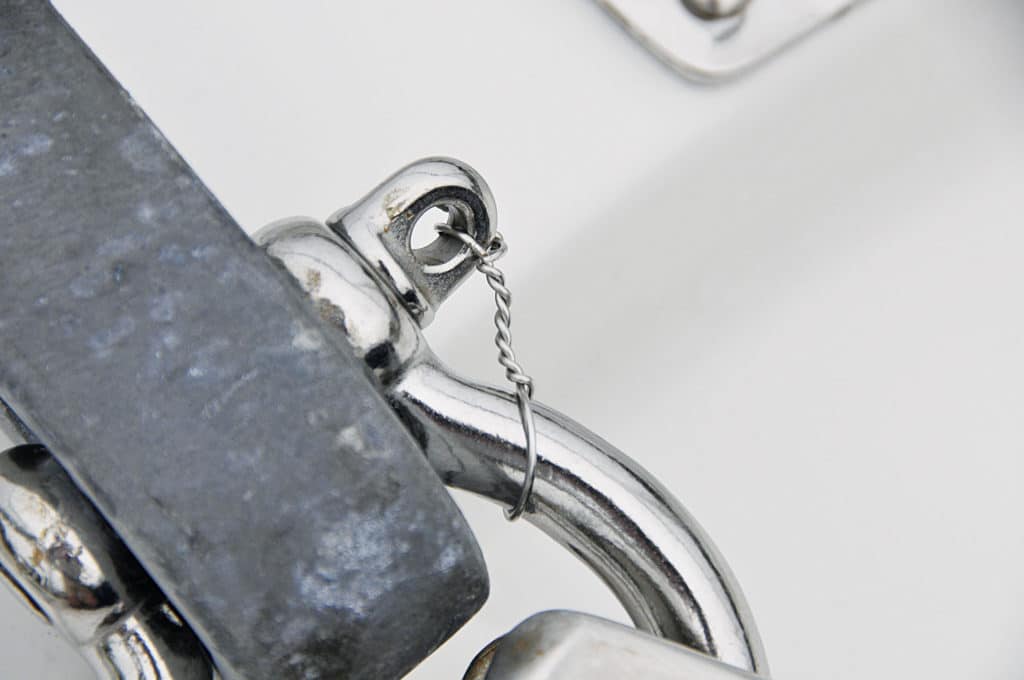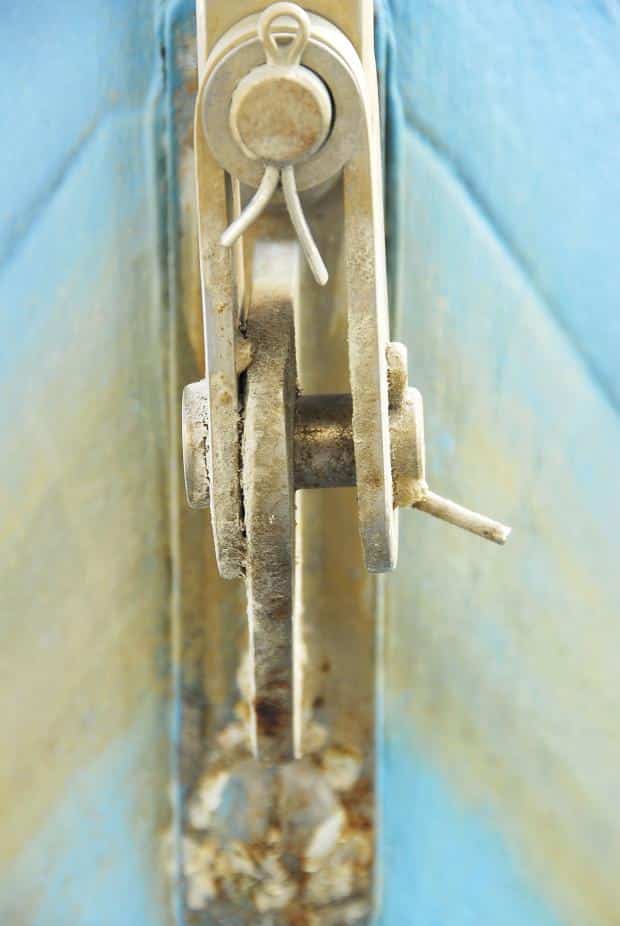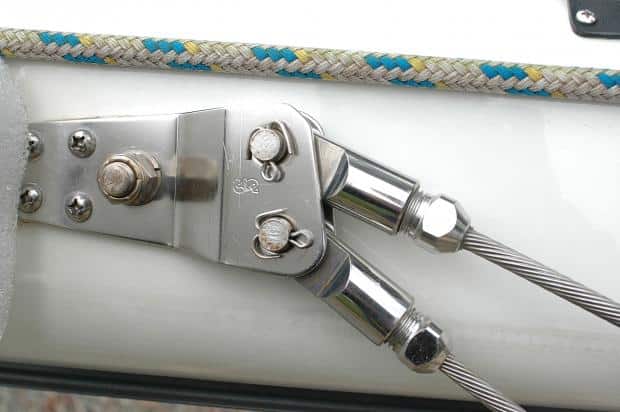
Pins and Wire
Among their many uses, cotter pins, clevis pins and seizing wire help ensure your spar is upright, the engine remains in gear, the steering holds a straight course and the anchor stays set. These items may be small, but they play vital roles in keeping a vessel in working order.
Cotter pins, available in both metric and standard sizes, are used in numerous locations aboard a sailboat, most notably in the rigging. Turnbuckles are typically secured with cotter pins, and so are their clevis pins. When it comes to cotter pins, size matters. Select the largest size that will fit into the hole designated for its use. The object they are securing can overpower undersized or loose-fitting cotter pins.
Cotter-pin alloy should be appropriate for the application. In most cases that means stainless steel. For instance, for a submerged propeller application, use 316 alloy. On-deck applications can use 18-8-series stainless steel; however, if the pin will be covered by tape or a chafe guard, crevice corrosion remains a concern, again making 316 the preferred choice. Unless specified by an equipment manufacturer, under no circumstances choose brass cotter pins. Brass is comparatively soft, prone to dezincification when used in in the marine environment and galvanically incompatible with aluminum.

| |This cocked bobstay clevis pin, with an excessive gap, may soon fail.|
Cotter pins are secured by bending their “legs” at 180-degree angles. In some cases, however, it may be preferable to reduce the bend to about 30 degrees for quick removal. For example, if a failed rig needs to be cast off, lower shroud and stay pins may benefit from this approach. Finally, avoid reusing cotter pins.
Clevis pins work in tandem with cotter pins. But cotter pins prevent movement, while clevis pins support load — often significant amounts of it — which makes their selection, installation and periodic inspection extremely important. Like cotter pins, clevis pins should completely fill the hole into which they are inserted; a sloppy fit can lead to wear and possibly failure. When removed, or before reinstalling, carefully inspect both the clevis pin and the fitting into which it is installed, looking for signs of fretting, galling or elongation.
Never employ a common fastener, like a machine screw, in place of a clevis pin. Whenever two surfaces are directly connected via a round hole — and especially where the surfaces bear directly on the connecting device — use a clevis pin. Fasteners are not designed to support such moving loads. This misuse is commonly encountered in steering systems, where turning blocks or autopilot rams are connected to tiller arms. Again, if the loads bear directly on the pivot point, a clevis pin rather than a fastener should be used.

| |These cotter and clevis pins are snug fits.|
Seizing wire may be used in select locations aboard cruising vessels, including anchor rode shackles and propeller shaft couplings. It should be made from annealed stainless steel or Monel. The diameter should be suited to the application: Larger is almost always better; the most common diameters are 0.020-, 0.032- and 0.041-inch.
There is an art to installing seizing wire. It should be tensioned in a manner that turns fasteners and screw pins clockwise, tightening them. Unlike a cotter pin, seizing wire is used to prevent a fastener from loosening (not to retain it if that happens). Multiple wraps are acceptable. When tensioning, grab the bitter ends of the wire with pliers, twisting the wire so the wrap works its way toward the hardware. “Choking up” on the wire ends (grabbing them closer to the hardware) tends to over-stress the wire, leading to breakage.
Steve D’Antonio offers services for boat owners and boat buyers through his company, Steve D’Antonio Marine Consulting.








